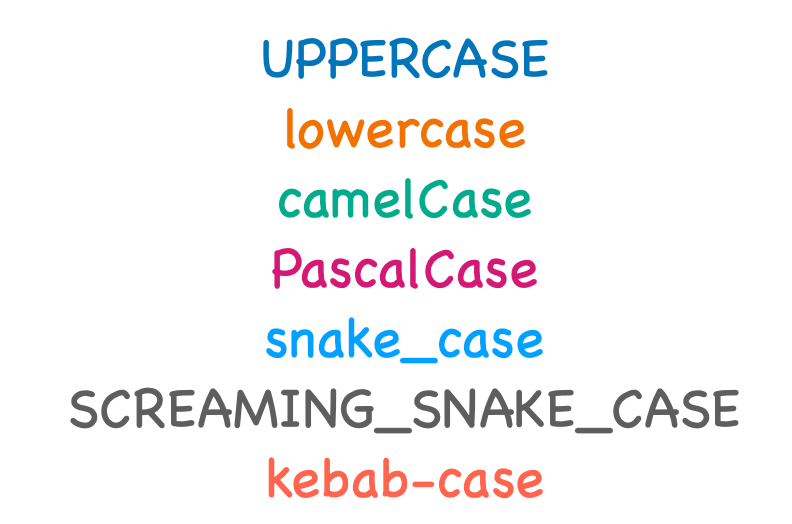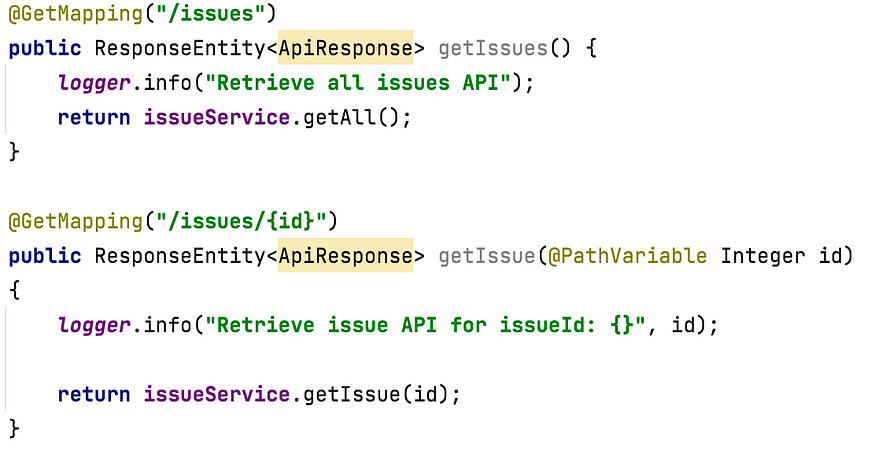#springboot
Source
Mastering Backend Development with Java Spring Boot: Best Practices and Pro Tips | by Nihal Parmar | Medium

Spring Boot is a widely used and very popular enterprise-level high-performance framework.
Spring Boot 是一种广泛使用且非常流行的企业级高性能框架。
Here are some best practices and a few tips you can use to improve your Spring Boot application and make it more efficient.
以下是一些最佳实践和技巧,您可以用来改进 Spring Boot 应用程序,使其更加高效。
This article will be a little longer, and it will take some time to completely read the article.
本文篇幅稍长,完整阅读需要耗费不少时间。
Proper packaging style 适当的包装风格
Proper packaging will help to understand the code and the flow of the application easily.
适当的包装有助于轻松理解代码和应用程序的流程。
You can structure your application with meaningful packaging.
您可以通过有意义的打包来构建应用程序。
You can include all your controllers into a separate package, services in a separate package, util classes into a separate package…etc. This style is very convenient in small-size microservices.
您可以将所有
controller打包成一个单独的包,将服务打包成一个单独的包,将util类打包成一个单独的包……等等。这种风格在小型微服务中非常方便。If you are working on a huge code base, a feature-based approach can be used. You can decide on your requirement.
如果您正在处理庞大的代码库,则可以使用基于功能的方法。您可以根据自己的需求来决定。
Based on type
基于类型

Based on feature
基于功能

Use design patterns 使用设计模式
No complaints. Design patterns are already best practices.
But you must identify the place where you can use them.
Please check this article to understand “how to use the Builder design pattern” in our Spring Boot applications.
不要埋怨。设计模式已经是最佳实践。
但您必须确定可以使用它们的地方。
请查看本文以了解:”如何在 Spring Boot 应用程序中使用生成器设计模式“。
Use Spring Boot starters 使用 Spring Boot 启动器

Image: https://www.merriam-webster.com/words-at-play/names-of-appetizers
This is a cool feature of Spring Boot.
这是 Spring Boot 的一个很酷的功能。
We can very easily use starter dependencies without adding single dependencies one by one. These starter dependencies are already bundled with the required dependencies.
我们可以非常轻松地使用启动依赖,而无需逐个添加单个依赖。这些启动依赖已经与所需的依赖捆绑在一起。
For example, if we add spring-boot-starter-web dependency,by default, it is bundled with jackson, spring-core, spring-mvc, and spring-boot-starter-tomcat dependencies.
例如,如果我们添加了spring-boot-starter-web依赖,默认情况下,它与 jackson、spring-core、spring-mvc 和 spring-boot-starter-tomcat 依赖捆绑在一起。
So we don’t need to care about adding dependencies separately.
因此,我们无需单独添加依赖。
And also it helps us to avoid version mismatches.
此外,它还能帮助我们避免版本不匹配。
Use proper versions of the dependencies 使用正确的依赖版本
It is always recommended to use the latest stable GA versions.
建议始终使用最新的稳定GA版本。
Sometimes it may vary with the Java version, server versions, the type of the application…etc.
有时可能会因 Java 版本、服务器版本、应用程序类型……等而有所不同。
Do not use different versions of the same package and always use < properties> to specify the version if there are multiple dependencies.
不要使用同一软件包的不同版本,如果存在多个依赖关系,应始终使用 < properties> 来指定版本。

Use Lombok 使用 Lombok
As a Java developer, you have probably heard of the Lombok project.
Lombok is a Java library that can be used to reduce your codes and allow you to write clean code using its annotations.
For example, you may use plenty of lines for getters and setters in some classes like entities, request/response objects, dtos…etc.
But if you use Lombok, it is just one line, you can use @Data, @Getter or @Setter as per your requirement.
You can use Lombok logger annotations as well. @Slf4j is recommended.
Check this file for your reference.
作为一名 Java 开发人员,您可能听说过Lombok 项目。
Lombok是一个 Java 库,可用于减少代码,并允许您使用其注解编写简洁的代码。例如,在一些类(如实体、请求/响应对象、dtos……等)中,您可能会使用大量的行来表示
getters和setters。但如果使用 Lombok,则只需一行,您可以根据需要使用 @Data、@Getter 或 @Setter。
您还可以使用 Lombok 日志注释。 建议使用 @Slf4j。
请查看此 file,以供参考。
Use constructor injection with Lombok 使用 Lombok 注入构造函数

When we talk about dependency injection, there are two types.
当我们谈论依赖注入时,有两种类型。
One is “constructor injection” and the other is “setter injection”. Apart from that, you can also use “field injection” using the very popular @Autowired annotation.
一种是 “构造器注入“,另一种是 “设置器注入“。除此之外,你还可以使用非常流行的@Autowired注解来进行 “ 字段注入 “。
But we highly recommend using Constructor injection over other types. Because it allows the application to initialize all required dependencies at the initialization time.
但我们强烈建议使用构造器注入,而不是其他类型。因为它允许应用程序在初始化时初始化所有需要的依赖关系。
This is very useful for unit testing.
这对单元测试非常有用。
The important thing is, that we can use the @RequiredArgsConstructor annotation by Lombok to use constructor injection.
重要的是,我们可以使用 Lombok 的 @RequiredArgsConstructor 注解来使用构造器注入。
Check this sample controller for your reference.
请查看 sample controller 以供参考。
1 | package com.app.controller; |
Use slf4j logging 使用 slf4j 日志

Logging is very important.
If a problem occurs while your application is in production, logging is the only way to find out the root cause.
Therefore, you should think carefully before adding loggers, log message types, logger levels, and logger messages.
Do not use System.out.print()
Slf4j is recommended to use along with logback which is the default logging framework in Spring Boot.
Always use slf4j { } and avoid using String interpolation in logger messages. Because string interpolation consumes more memory.
Please check this file for your reference to get an idea about, implementing a logger.
==You can use Lombok== ==@Slf4j== ==annotation to create a logger very easily.==
If you are in a micro-services environment, you can use the ELK stack.
日志记录非常重要。
如果应用程序在生产过程中出现问题,日志记录是找出根本原因的唯一途径。
因此,在添加日志记录器、日志消息类型、日志记录器级别和日志记录器消息之前,应仔细考虑。
不要使用 System.out.print()
建议使用
Slf4j和logback,后者是Spring Boot的默认日志框架。始终使用 slf4j { },避免在日志记录器消息中使用字符串插值。因为字符串插值会消耗更多内存。
请查看 此文件 以了解如何实现日志记录器,供您参考。
===你可以使用 Lombok== ==@Slf4j== ==_annotation 来轻松创建日志记录器。
如果你身处微服务环境,可以使用 ELK 栈。
Use Controllers only for routing 仅在路由时使用控制器

Controllers are dedicated to routing.
It is stateless and singleton.
The DispatcherServlet will check the @RequestMapping on Controllers
Controllers are the ultimate target of requests, then requests will be handed over to the service layer and processed by the service layer.
The business logic should not be in the controllers.
控制器专用于路由。
它是无状态和单例。
DispatcherServlet 会检查控制器上的 @RequestMapping 。
控制器是请求的最终目标,然后请求将被移交给服务层并由服务层处理。
业务逻辑不应该在控制器中。
Use Services for business logic 业务逻辑使用服务
The complete business logic goes here with validations, caching…etc.
Services communicate with the persistence layer and receive the results.
Services are also singleton.
这里***完整的业务逻辑,包括验证、缓存……等。
服务与持久层通信并接收结果。
服务也是单例的。
Bonus article: Manage stress as a Software Engineer
Bonus article: Manage stress as a Software Engineer
Avoid NullPointerException 避免 NullPointerException

To avoid NullPointerException you can use Optional from java.util package.
You can also use null-safe libraries. Ex: Apache Commons StringUtils
Call equals() and equalsIgnoreCase() methods on known objects.
Use valueOf() over toString()
Use IDE-based @NotNull and @Nullable annotations.
避免NullPointerException,您可以使用 java.util 包中的Optional。
您还可以使用空安全库。例如:Apache Commons StringUtils
在已知对象上调用 equals() 和 equalsIgnoreCase() 方法。
使用 valueOf() 而非 toString()
使用基于 IDE 的 @NotNull 和 @Nullable 注解。
Use best practices for the Collection framework 使用Collection框架的最佳实践
Use appropriate collection for your data set.
Use forEach with Java 8 features and avoid using legacy for loops.
Use interface type instead of the implementation.
Use isEmpty() over size() for better readability.
Do not return null values, you can return an empty collection.
If you are using objects as data to be stored in a hash-based collection, you should override equals() and hashCode() methods. Please check this article “How does a HashMap internally work”.
针对数据集使用适当的集合。
使用 Java 8 Lambda 的 forEach,避免使用传统的 for 循环。
使用 接口类型 而不是具体实现。
使用 isEmpty(),而不是 size(),以获得更好的可读性。
不要返回空值,可以返回空集合。
如果使用对象作为数据存储在基于Hash的集合中,则应覆盖 equals() 和 hashCode() 方法。请查看本文”HashMap 内部如何工作“。
Use pagination 使用分页

This will improve the performance of the application.
If you’re using Spring Data JPA, the PagingAndSortingRepository makes using pagination very easy and with little effort.
这将提高应用程序的性能。
如果你使用的是Spring Data JPA,那么 PagingAndSortingRepository 会让分页功能的使用变得非常简单,而且几乎不费吹灰之力。
Use caching 使用缓存
Caching is another important factor when talking about application performance.
By default Spring Boot provides caching with ConcurrentHashMap and you can achieve this by @EnableCaching annotation.
If you are not satisfied with default caching, you can use Redis, Hazelcast, or any other distributed caching implementations.
Redis and Hazelcast are in-memory caching methods. You also can use database cache implementations as well.
缓存是影响应用程序性能的另一个重要因素。
默认情况下,Spring Boot 通过 ConcurrentHashMap 提供缓存,您可以通过 @EnableCaching 注解实现缓存。
如果对默认缓存不满意,可以使用 Redis、Hazelcast 或其他分布式缓存实现。
Redis 和 Hazelcast 是内存缓存方法。您也可以使用数据库缓存实现。
Use custom exception handler with global exception handling 使用自定义异常处理程序和全局异常处理

This is very important when working with large enterprise-level applications.
Apart from the general exceptions, we may have some scenarios to identify some specific error cases.
Exception adviser can be created with @ControllerAdvice and we can create separate exceptions with meaningful details.
It will make it much easier to identify and debug errors in the future.
在处理大型企业级应用程序时,这一点非常重要。
除了一般的异常情况外,我们可能还需要在某些情况下识别一些特定的错误案例。
可以使用 @ControllerAdvice 创建异常切面,我们可以创建具有有意义细节的单独异常。
这将大大方便今后识别和调试错误。
Bonus article: What is serverless Architecture?
Bonus article: 什么是无服务架构?
Use custom response object 使用自定义响应对象

A custom response object can be used to return an object with some specific data with the requirements like HTTP status code, API code, message…etc.
We can use the builder design pattern to create a custom response object with custom attributes.
Please check this article for your reference.
自定义响应对象可用于返回带有某些特定数据的对象,这些数据应符合 HTTP 状态代码、API 代码、消息等要求。
我们可以使用 ** 生成器设计模式** 来创建带有自定义属性的自定义响应对象。
请查阅本文以供参考。
Remove unnecessary codes, variables, methods, and classes. 删除不必要的代码、变量、方法和类

commented code in the production
生产中的注释代码
Unused variable declarations will acquire some memory.
Remove unused methods, classes…etc because it will impact the performance of the application.
Try to avoid nested loops. You can use maps instead.
未使用的变量,**声明会占用一些内存。
删除未使用的方法、类……等,因为这将影响应用程序的性能。
尽量避免嵌套循环。可以使用映射来代替。
Using comments 使用注释
Commenting is a good practice unless you abuse it.
DO NOT comment on everything. Instead, you can write descriptive code using meaningful words for classes, functions, methods, variables…etc.
Remove commented codes, misleading comments, and story-type comments.
You can use comments for warnings and explain something difficult to understand at first sight.
注释是一种很好的做法,除非你滥用它。
切勿对所有内容进行注释。相反,您可以使用有意义的词来描述类、函数、方法、变量……等,编写描述性代码。
删除注释代码、误导性注释和故事型注释。
您可以使用注释来警告和解释一些乍一看难以理解的内容。
Use meaningful words for classes, methods, functions, variables, and other attributes. 对类、方法、函数、变量和其他属性使用有意义的词语。

This looks very simple, but the impact is huge.
Always use proper meaningful and searchable naming conventions with proper case.
Usually, we use nouns or short phrases when declaring classes, variables, and constants. Ex: String firstName, const isValid
You can use verbs and short phrases with adjectives for functions and methods. Ex: readFile(), sendData()
Avoid using abbreviating variable names and intention revealing names. Ex: int i; String getExUsr;
If you use this meaningfully, declaration comment lines can be reduced. Since it has meaningful names, a fresh developer can easily understand by reading the code.
这看起来很简单,但影响却很大。
始终使用有意义且可搜索的命名规则,并使用正确的大小写。
通常,我们在声明类、变量和常量时使用名词或短语。例如:字符串 firstName、常量 isValid
在声明函数和方法时,可以使用谚语和带有形容词的短语。例如:readFile()、sendData()
避免使用缩略变量名和暴露想法名。例如:int i; String getExUsr;
如果使用这些有意义的名称,就可以减少声明注释行。由于使用了有意义的名称,新开发人员在阅读代码时很容易理解。
Use proper case for declarations 在声明中使用合适的大小写

There are many different cases like UPPERCASE, lowercase, camelCase, PascalCase, snake_case, SCREAMING_SNAKE_CASE, kebab-case…etc.
But we need to identify which case is dedicated to which variable.
Usually, I follow,
有许多不同的大小写,如 大写、小写、骆驼大写、帕斯卡大写、蛇大写、SCREAMING_SNAKE_CASE、kebab-case……等等。
但我们需要确定哪个大小写专用于哪个变量。
通常,我是这样做的。
classes — PascalCase
methods & variables — camelCase
方法和变量–camelCase
constants — SCREAMING_SNAKE_CASE
常量 - SCREAMING_SNAKE_CASE
DB-related fields — snake_case
与 DB 相关的字段 - snake_case
This is just an example. It can be different from the standard you follow in the company.
这只是一个示例。它可能与您在公司中遵循的标准不同。
Be simple 保持简单

Always try to write simple, readable codes.
The same simple logic can be implemented using different ways, but it is difficult to understand if it is not readable or understandable.
Sometimes complex logic consumes more memory.
Try to use KISS, DRY, and SOLID principles when writing codes. I will explain this in a future article.
始终尽量编写简单、可读的代码。
同样简单的逻辑可以用不同的方法实现,但如果不可读性或不可懂性,就很难理解。
有时复杂的逻辑会消耗更多内存。
在编写代码时,尽量使用KISS、DRY和SOLID原则。我将在今后的文章中对此进行解释。
DRY stands for “Don’s Repeat Yourself
如果代码可以公用就尽量公用,不要复制粘贴代码。
kiss:KISS stands for “Keep It Simple, Stupid”.
KISS就是保持简单,愚蠢。这个愚蠢指的是方法最好只知道干一件事情。这两点和Unix最初的设计的理念是一样的,简单好用即是美。
SOLID原则:
Single Responsibility Principle 单一职责:每个类和接口有明确目标。
Open-Closed Principle 开闭原则:开放扩展,封闭修改。
Liskov Substitution Principle 里式替代:尽可能让代码多态。
Interface Segregation Principle 接口隔离:实现接口替代类继承。
Dependency Inversion Principle 依赖倒转原则:依赖抽象而不是依赖实现。
Use a common code formatting style 使用通用的代码格式样式

Formatting styles vary from developer to developer. Coding style changes are also considered a change and can make code merging very difficult.
To avoid this, the team can have a common coding format.
格式风格因开发人员而异。编码风格的改变也被认为是一种改变,会使代码合并变得非常困难。
为了避免这种情况,团队可以采用统一的编码格式。
Use SonarLint 使用 SonarLint

This is very useful for identifying small bugs and best practices to avoid unnecessary bugs and code quality issues.
这对识别小错误和最佳实践非常有用,可避免不必要的错误和代码质量问题。
You can install the plugin into your favorite IDE.
您可以将该插件安装到自己喜欢的集成开发环境中。
Follow me for new tidbits on the domain of tech.